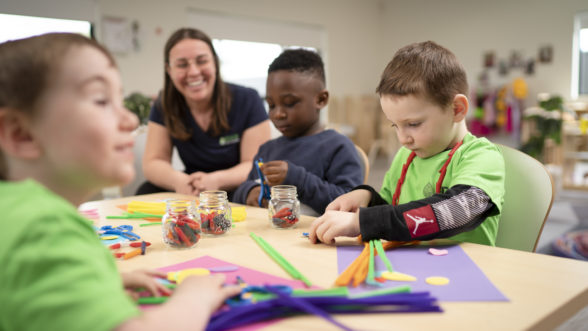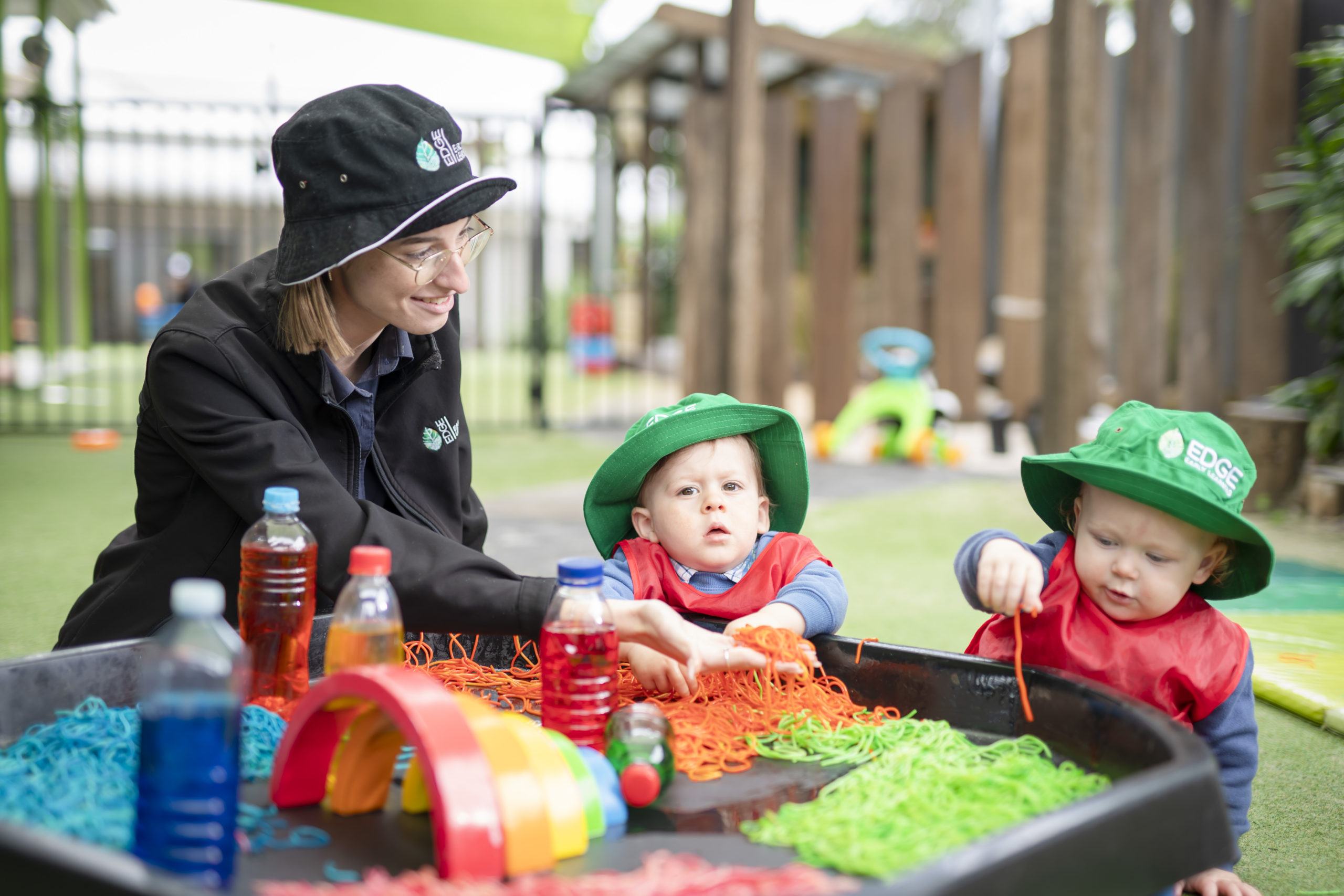
Arts and Crafts
Arts and Crafts
16 December, 2026

Your child can benefit from sensory play no matter how old they are. Whether they are a baby developing new connections in their brain, a toddler developing thinking abilities or independence or a preschooler developing their language or cognitive skills, sensory play is a powerful tool.
The best part is that your child doesn’t need to be in the classroom to learn through sensory play – there are plenty of ways to participate in your own home. And you probably already have everything you need!
Here are our five favourite forms of sensory play at home…
Opportunities for sensory play can be found everywhere – including the kitchen! One effective way to encourage your child to pursue independent sensory play is to create a sensory table. Fill shallow trays with things of different textures – you could use uncooked rice, pasta or beans, for example – then give your child spoons, scoops and small toys to bury. Just be sure to supervise them while they play. You could also throw out the rule book and let them play with their food (in an appropriate setting, of course!). Let them twist noodles, smear yoghurt, squish strawberries and discover the fun textures and smells that occur as a result.
As its name would suggest, sensory play is a great way for your child to develop their senses – sound included. Why not try making sound tubes for your little one? All you’ll need are a few empty paper towel rolls, some duct or electrical tape and a variety of different materials (uncooked rice, dried beans or beads are some good examples). Fill each tube with a different material and secure the ends, then watch as your child discovers the different sounds that are made. Another activity is to have your child guess which items make different sounds. Crinkle paper behind your back, push different buttons on a toy or bounce different balls out of sight and ask them to guess what made the sound.
Sensory play has more physical benefits than just the senses – you can also use it to develop skills like balance. Using the balance beam at your local park or gym is one great, simple example of sensory play, but you don’t necessarily need to leave the house to practice. Tape lines onto the floor and challenge your child to walk on them, or use the tape to make a hopscotch court. You can also improve their coordination and agility by setting up longer obstacle courses with sensory tasks for them to complete.
The internet is full of ideas for water-based sensory play, but one of our favourite activities for developing emotional intelligence is to create calming bottles. All you’ll need is a clear bottle, some water, clear glue, food dye and glitter. Mix together the water and glue, then add the mixture to the bottle. Pop some glitter and a couple of drops of food dye inside, then glue the lid shut. When your child feels upset, their calming bottle will provide a visually relaxing tool for them to look at while taking deep breaths.
Hands-on play is one of the most effective ways to learn important skills. Just take sorting, for example. Buy an assorted bag of beads, pom poms or pipe cleaners and ask your child to sort them by colour. You could also twist the pipe cleaners into different shapes and ask your child to sort them by shape or size. Of course, be sure to supervise them during these activities to prevent choking hazards. As your child gets older, they can develop their fine motor skills and progress their sorting skills by adding beads to thread or gluing pom poms to the canvas in certain orders.
With these simple sensory activities, families can create an entertaining and engaging crafternoon for their little ones that contributes to their early development! If you try one of these sensory activities, be sure to tag us online @edgeearlylearning so we can see all your amazing crafty creations.
Get creative – the world is your oyster when it comes to sensory play.